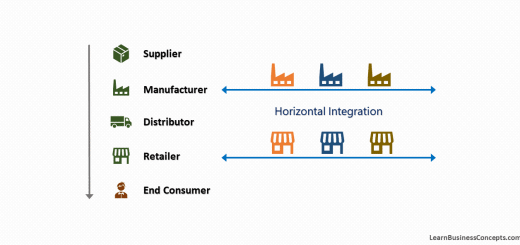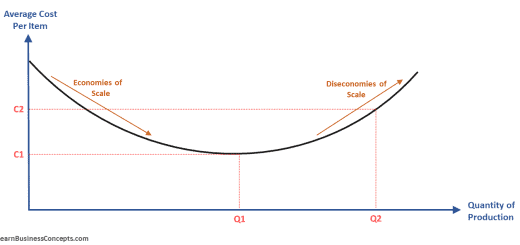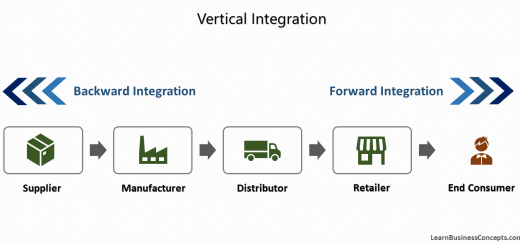Advantages and Disadvantages of Vertical Integration
The company obtains the ownership and control of more than one stage of the supply chain or distribution chain or both, in the terms of vertical integration. The vertical integration could be to move forward to the end consumer, or else, move backward to raw materials production.
There are two types of Vertical Integration,
Following are the Advantages and Disadvantages of Vertical Integration,
Advantages (Pros / Positives / Benefits) of Vertical Integration
1) Synergize Operations and Increase Revenue
The reason behind companies choosing vertical integration is to increase the ownership and authority over their value chain (both forward and backward). This provides more control of the company’s supply and distribution chain. The main benefit of this will be to synergize the total operations in a forward and backward manner to improve the financials.
2) Increase Barriers to Entry
Verticle integration provides businesses the control over their supply chain and distribution network. A successfully vertically integrated company can conduct sourcing, production, and distribution in their own company in their control. The total operation from soucing to delivery will be optimized and will be in greater control. This will be a thread for the competitors outside to compete with a company like this.
3) Greater Competitive Advantage
Verticle integration brings down the cost of sourcing and distribution with the forward and backward integration. This results in a competitive advantage for the business over others. The main competitive advantage will be greater control over their supply and distribution network in the value chain with less external dependency.
4) Offers more Cost Reduction Options
Vertical integration offers many options to control costs in procurement and distribution. With the capability of direct selling to end consumers, the middleman will be eliminated. A single entity that manages the soucing and distribution process will also have more ability to optimize the cost utilization and avoid waste.
5) Increase the Market Share
Verticle integration strategy optimizes the entire process of production to distribution. This will ultimately drive the company to reach different geographies in a fast pace manner with less depending on another company. As a result. the company market share will be increased.
Disadvantages (Cons / Negatives / Drawbacks / Risks) of Vertical Integration
1) Significant Capital Requirements
Verticle integration requires significant capital. The main financial requirement is to acquire or merge with the company before and/or ahead of their value chain. Also, there will be cost involved in the first few months or a few years after verticle integration to optimize the business activities.
2) Failure to Realize Synergistic
Verticle integration requires a significant level of synergies between the two companies. There could be some circumstances where the synergies can not be realized practically. There could be issues in the planning or else during the execution. This is the biggest risk and disadvantage of verticle integration.
3) Increased Level of Operational Cost
The company has to maintain two separate entities after verticle integration. Those are the mother company with the original business and the soucing or distribution company. The company should carefully investigate whether the benefits of verticle integration exceed its costs. Failure of proper management could result in a higher cost of the total operation.
4) Risk of Obsolete Due to New Technologies
Vertical integration could bring down a company when emerging technologies evolve quickly and become mandatory for the company to adopt. The company is then forced to reinvest in the new technologies to stay competitive, which could be less feasible due to the internal dependencies.
5) Result in Decreased Flexibility
After the verticle integration, the company should stick to the selected company for the sourcing and/or distribution. This could result in less flexibility since the external options are limited.
Recommended Articles:
- Vertical Integration


